
“I felt so baffled and excited that I called out to my companions, fearing to be a victim of a hallucination : ‘Look there! What is that? Look!’
‘Tso! Tso! Pangong-Tso!’ they shouted, and threw their caps into the air triumphantly, as if they had conquered a mighty pass; from which the first glimpse of the great Pangong Lake could be had, but I still could not believe my eyes. ‘Impossible’, I thought. ‘This cannot be water. It looks like some unearthly, self-luminous substance!’
The magnesium, though colourless in itself, kept the water absolutely free from organic matter or any form of life, whether plant or fish or crustaceans, and consequently the water was so transparent that on windless days, when the surface of the lake was as smooth as a mirror, it was impossible to see where the water ended and the beach began. I still remember the shock when for the first time I approached the edge of the water, and I suddenly felt its icy touch, because I had not noticed that the pebbles, which looked no different from those on the dry beach, were already under the water. The water was invisible as the air! Only when it got deeper, the ground assumed a greenish-blue tinge and finally disappeared in the luminous blue that made this lake such a wonder.”
Excerpts about Pangong Tso, from “The Way of the White Clouds” by Lama Angarika Govinda, first published in 1966.
Situated at an altitude of 14,500 feet, in Ladakh (India), Pangong Tso is one of the largest brackish (salt) water lake in Asia. It is 135 km long and width varies from 2 to 5 km, of which one-third falls in India and the remaining in Tibet (China). The lake freezes completely in winters.
In May 2011, after a long drive from Leh, delayed by frequent leisure stops to appreciate the magnificence of nature, we finally reached Pangong Tso late in the evening. It was a cloudy and cold evening, with the sun peeping momentarily, creating shimmering colors in the brackish water of the Blue lake. I was fortunate to make a few pictures before loosing sunlight.
Indeed Pangong Tso offered a baffling and exciting experience, not that can be easily achieved elsewhere in the world.
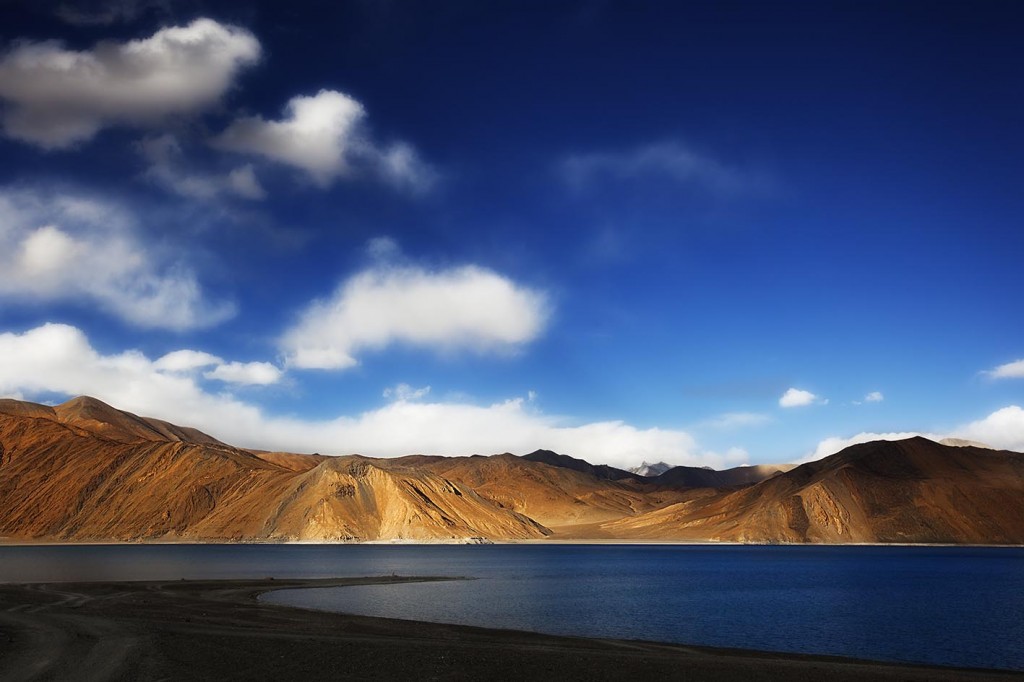 Photo: Tso! Tso! Pangong-Tso!
Photo: Tso! Tso! Pangong-Tso!
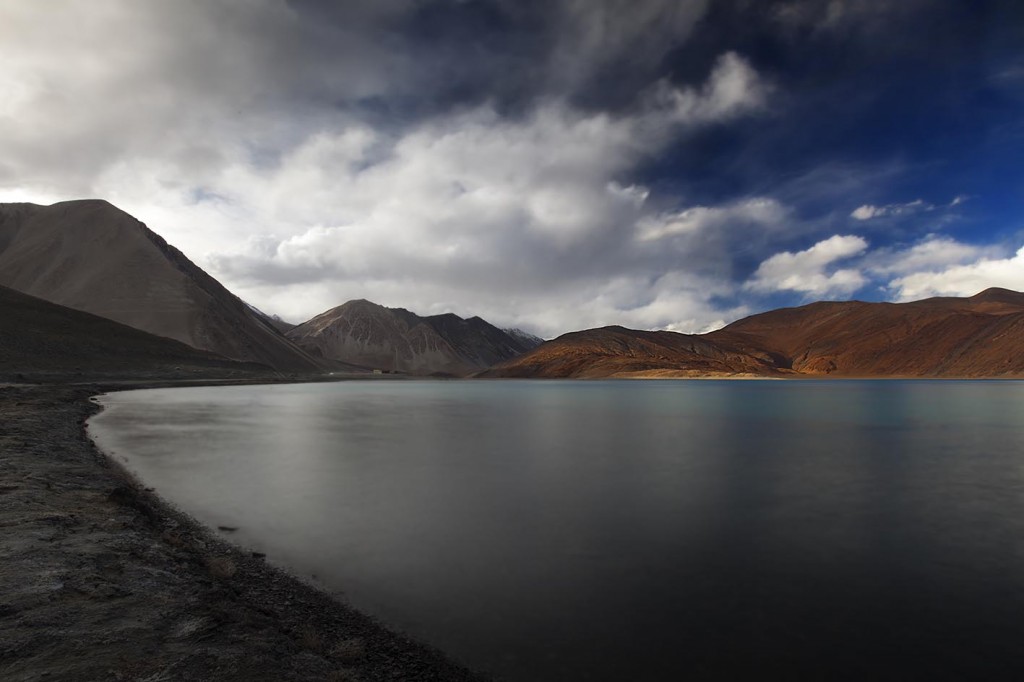
Photo: Tso! Tso! Pangong-Tso!
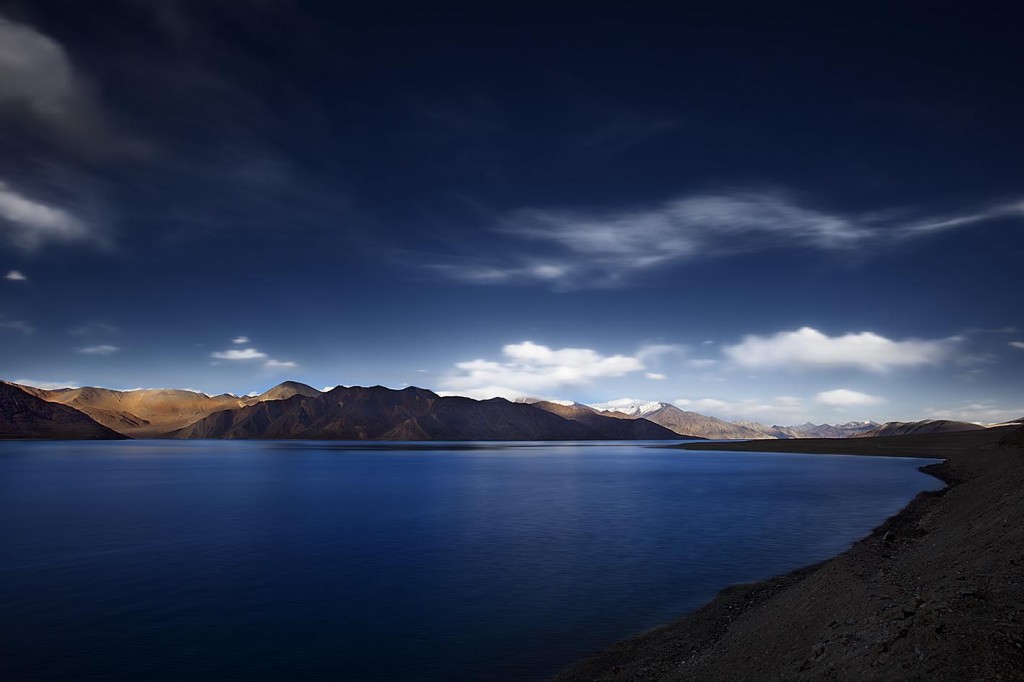
Photo: Tso! Tso! Pangong-Tso!
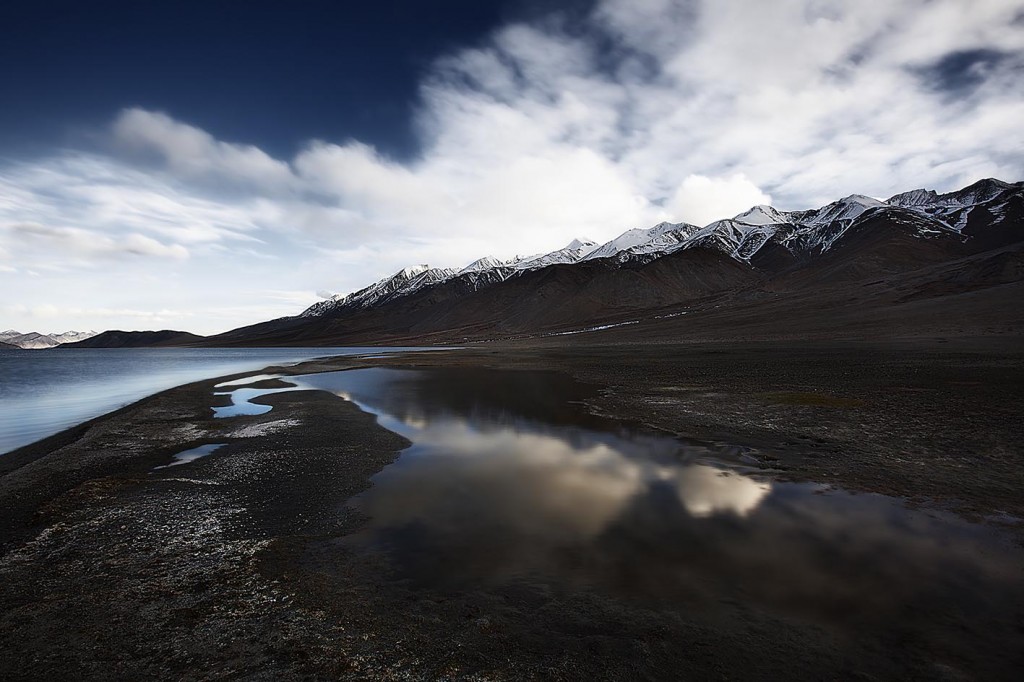
Photo: Tso! Tso! Pangong-Tso!
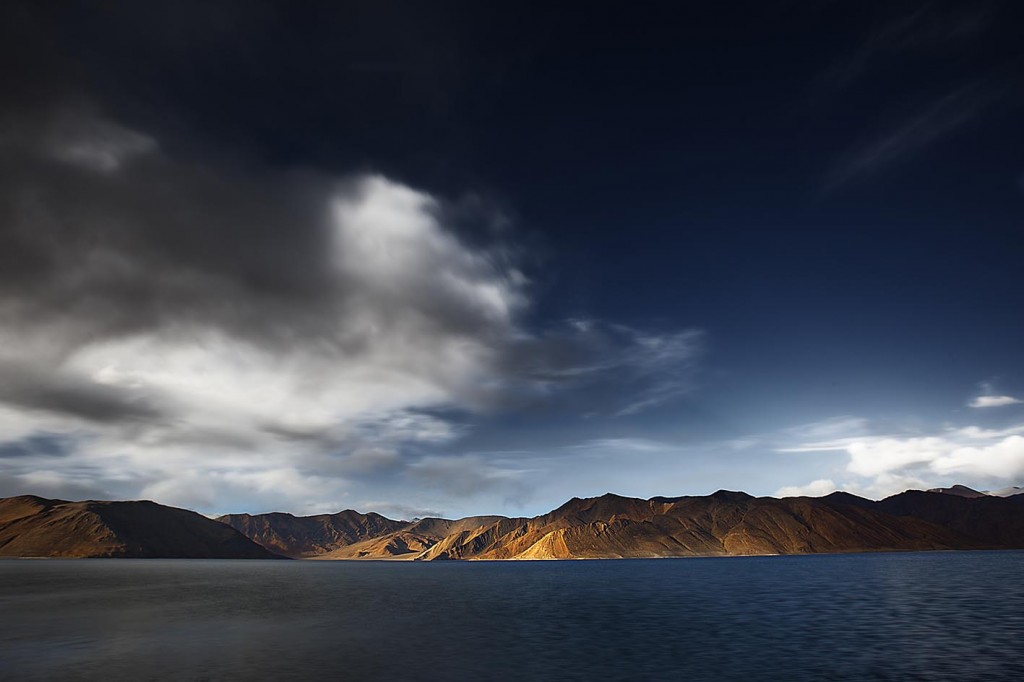
Photo: Tso! Tso! Pangong-Tso!
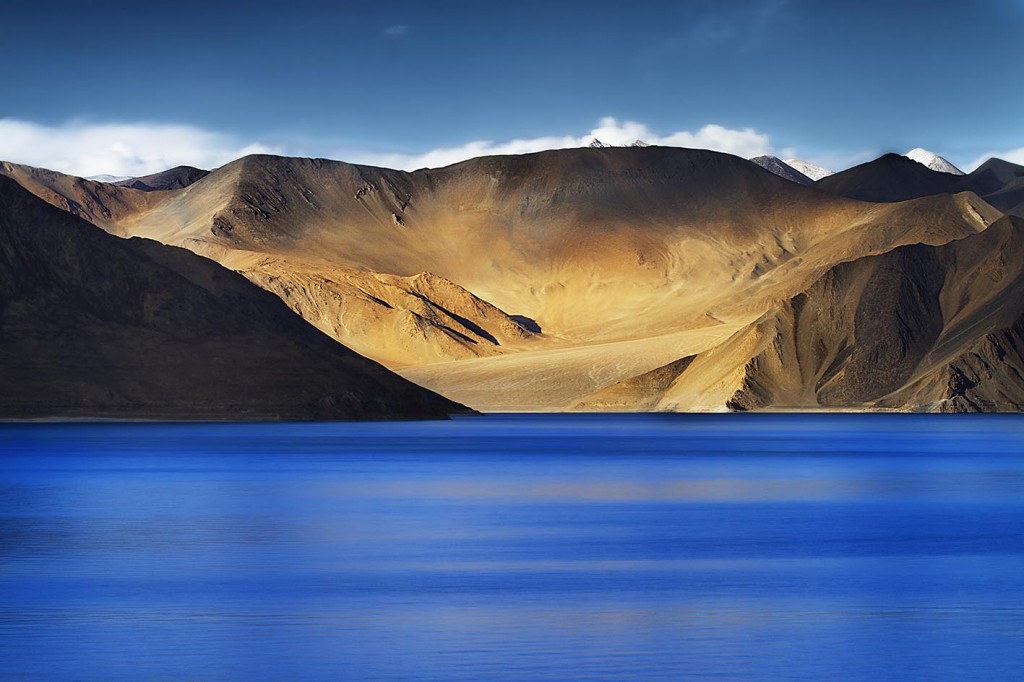
Photo: Tso! Tso! Pangong-Tso!
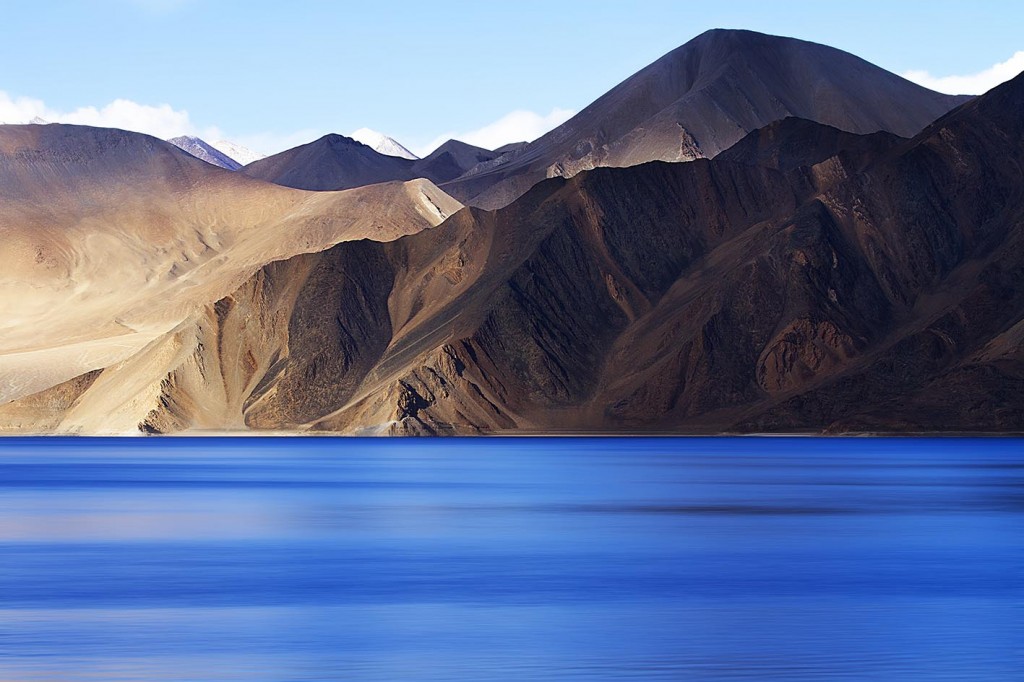
Photo: Tso! Tso! Pangong-Tso!
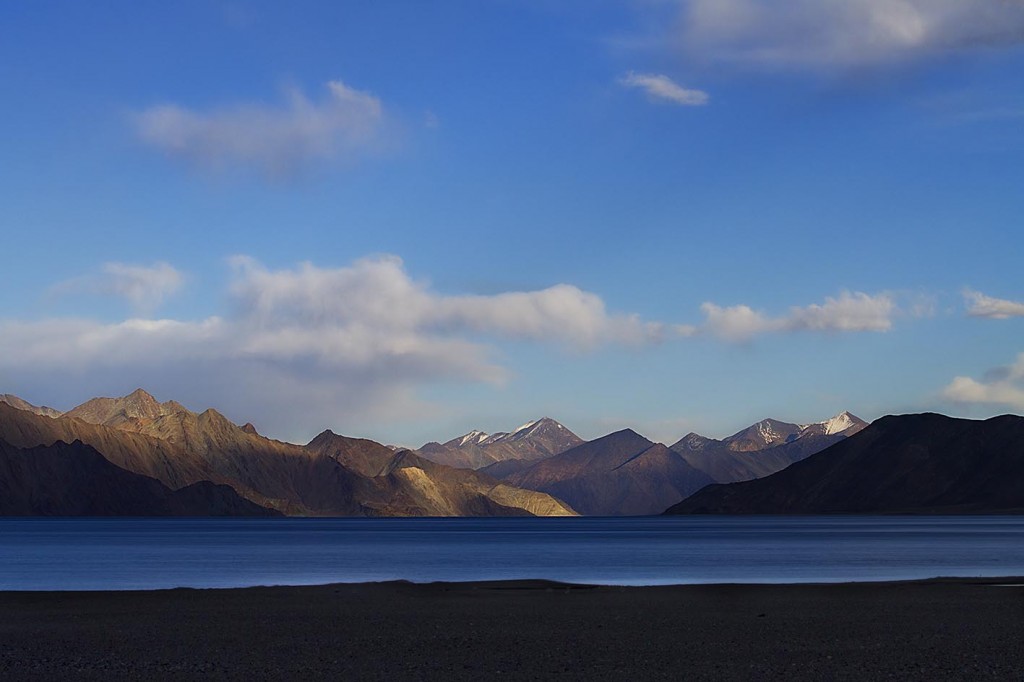
Photo: Tso! Tso! Pangong-Tso!
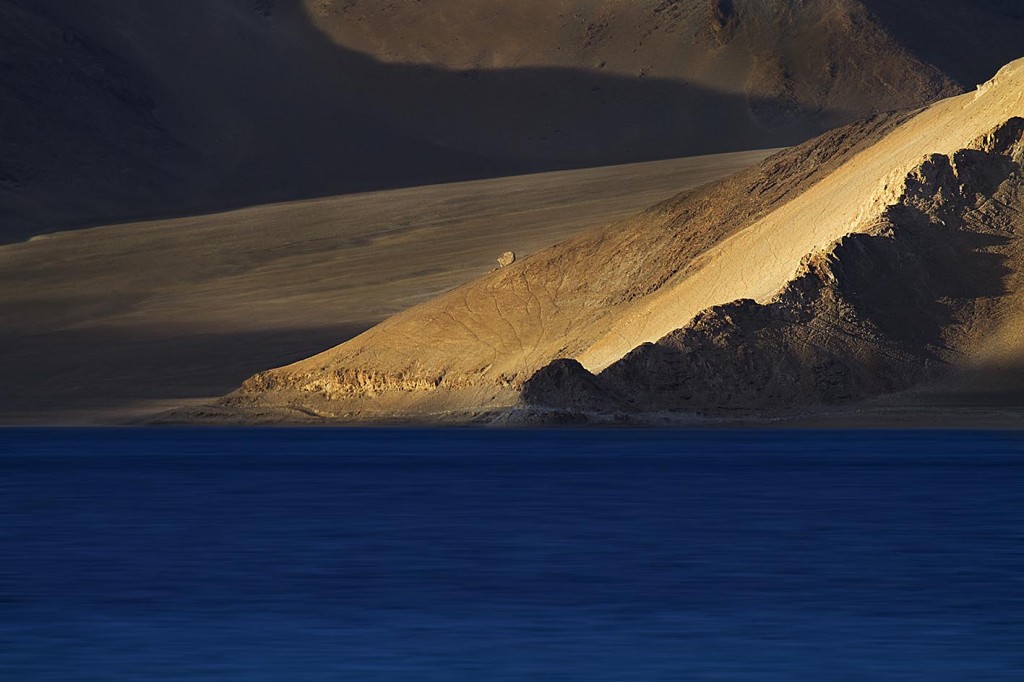
Photo: Tso! Tso! Pangong-Tso!
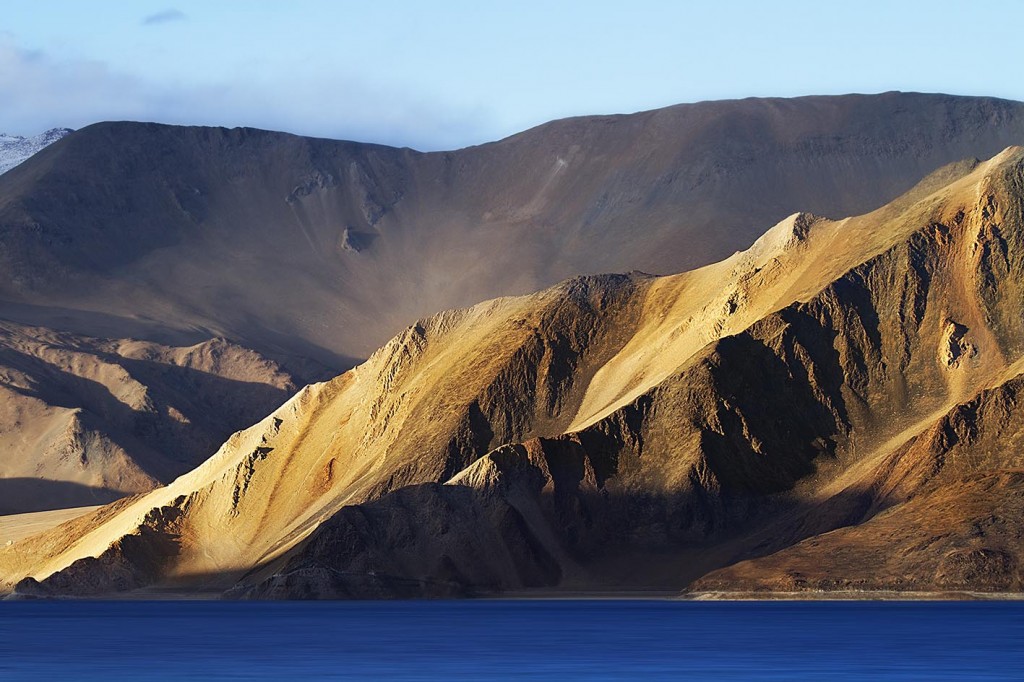
Photo: Tso! Tso! Pangong-Tso!

Comments(16)
adarsh says:
August 20, 2013 at 9:20 PMindeed awesome.. ..natures marvelous beauty..can imagine ur level of excitement, considering ur writeup…photography flawless as always!!
Arvinder Singh says:
August 21, 2013 at 10:18 AMUnbelievably pristine and so beautifully captured!!! Thanks for sharing them.
Umang Taneja says:
August 21, 2013 at 2:04 PMThese are unbeleiveable photographs. Thanks Amardeep ji for positng them.
Daljit Bains says:
August 21, 2013 at 2:05 PMBreathtaking! I did not know about this hidden treasure in India. I hope to visit this place. Thank you
Jaspal Sehdave says:
August 21, 2013 at 4:10 PMAwesome bhaiya …. Thanks for sharing and allowing us to also see these beautiful places through your lens 🙂
Mandeep Singh says:
August 23, 2013 at 10:54 PMvery creative shots…. \m/
Misha says:
August 26, 2013 at 1:47 PMWOW… makes me want to go there….. and see it for myself…!!! Put it on holiday plan nxt year.!!!
Dhruv says:
December 25, 2014 at 12:38 PMBrilliant … 🙂
Raj Mehta says:
December 25, 2014 at 8:35 PMIf you were to add that on and across its shores, a lot of brave Indians lie dead…if you were to add that blood red garnets abound in these surreal; barren hills, but that they cannot be recovered because the mines planted in 1962 still remain…if you were to add that some stunning migratory birds live off the marshes around the lake…you would have completed this stunning vista of natures bounty…And, on a desolate mountain pass in the Pangong Range that overlooks the lake; a left over of the ancient Tsethys Sea, there is a place of pilgrimage called Rezang La…at 16, 500 feet…In November 1962, 114 out of 123 soldiers along with Maj Shaitan Singh died there…last man; last round…Five were made prisoners, the others survived to tell the tale…Their spirits, their rooh, haunts these shores that Three Idiots made so famous…
Compliments.
Raj
Ruchika Singh says:
December 25, 2014 at 8:37 PMWhoa that’s breathtaking.
Arun says:
December 25, 2014 at 8:44 PMAmazing photography. The colours are out of the world. and the composition wonderful. The play of light is breathtaking. Congratulations.
vineet says:
December 25, 2014 at 11:31 PMNice pics Amardeep
Karamjeet Singh says:
December 26, 2014 at 1:00 PMLooking at the pictures I can imagine your excitement.Its truly heaven on earth.The mountains around it are not very high it seems a tableland,I mean a plateau at 14,500 ft.Nice photos and very informative write-up.Good going..
kishore kumar Biswas says:
December 26, 2014 at 3:50 PMSplendor of nature ” Far from the Madding crowd ” is there . Pristine , pure and serene. As the greedy civilization of machines could not reach there . As no vulgar urge to ” buy ” yet eyed it to ” possess ” the natural beauty , the Nature stands there with ethereal beauty.Wish this soulless corporate civilization can never reach there with it’s fat purse to turn it into ” market ” the desired “beauty ” of this civilization.
Amardeep with his majestic photograph as usual presented the Divine nature of Ladakh before us to make us understand how sacred and mesmerizing nature could be. We are grateful to Amardeep for bringing the heavenly beauty of nature to us. Regards to him.
Surupa Chatterjee says:
December 26, 2014 at 5:57 PMIts so stunning that words fail…just silence remains….Thank you for this mind blowing and divine visual moment….beyond any interpretation…
Hemani says:
December 27, 2014 at 3:10 AMBeautiful pictures;; vibrant colours, yet magically still… Thanks Amardeep for being our window to such splendid locations on Earth.